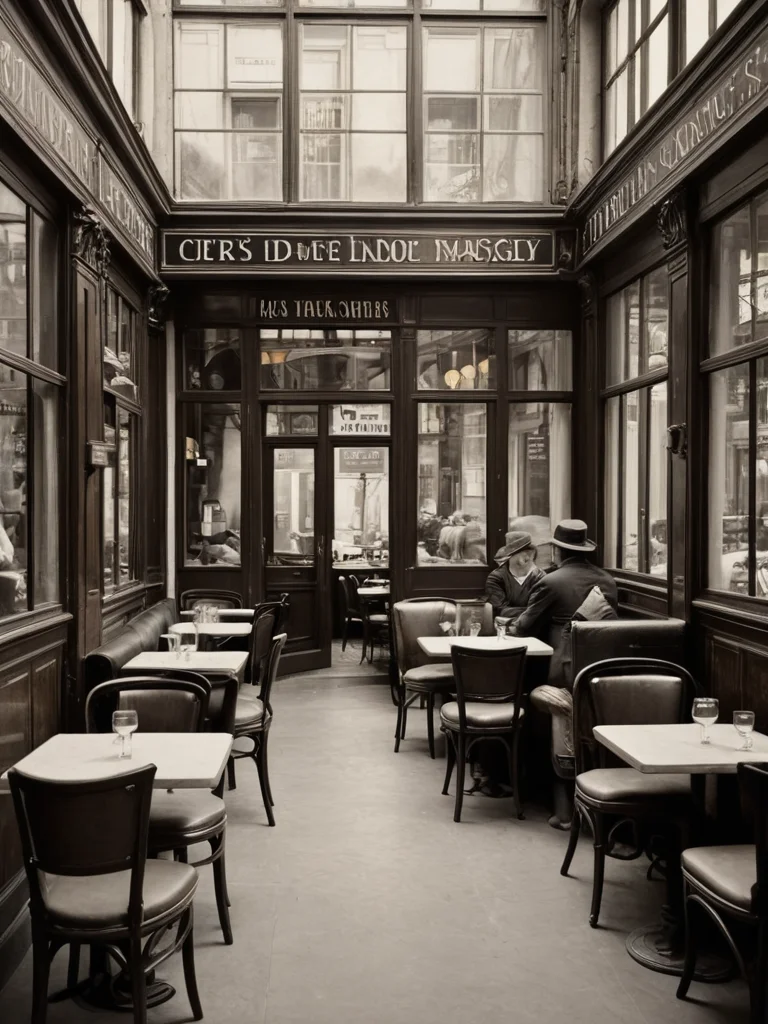Paris in the 1920s is not just a geographical location; it’s an era steeped in the spirit of freedom, creativity, and profound change. It was a time when, after the horrors of World War I, the world was trying to heal its wounds and find new meaning in life. The city on the Seine became a magnet for artists, writers, musicians, and intellectuals from around the globe, united by a common sense of disillusionment with old ideals and a yearning for new forms of self-expression. This period, known as the “Lost Generation,” left an indelible mark on cultural history and continues to influence our perception of the world today.
Introduction: Paris in the 1920s – The Cradle of the “Lost Generation”: Why is this Period So Important?
Historians and cultural scholars are unanimous in their opinion that the 1920s in Paris represent a period of unique cultural flourishing, comparable to the Renaissance. The post-war atmosphere fostered liberation from conservative norms and prejudices. Young people who had experienced the war sought to live in the here and now, to savor every moment, and to experiment in all spheres of life. Paris became a symbol of this freedom, a place where one could find oneself, realize one’s creative potential, and become part of something greater than just the daily routine.
The term “Lost Generation” was coined by Gertrude Stein, an American writer and hostess of a literary salon in Paris. She used it to refer to young people who were disoriented and disillusioned after the war, had lost faith in traditional values, and were searching for new guiding principles. In Paris, they found refuge, support, and an opportunity to express their feelings through art, literature, and music. Ernest Hemingway, F. Scott Fitzgerald, Ezra Pound, Gertrude Stein, James Joyce – these are just a few of those who shaped the cultural landscape of Paris in the 1920s.
The significance of this period cannot be overstated. It was then that new artistic movements like Surrealism and Dadaism emerged, radically changing the perception of creativity and self-expression. New narrative forms appeared in literature, reflecting the psychological state of individuals after the war. In music, jazz, brought by African American musicians, became a symbol of freedom and improvisation. Paris in the 1920s became a laboratory where new ideas were experimented with, and new cultural forms were created that continue to influence our lives to this day.
To understand the importance of this period, it is enough to recall how many works of art created at that time still captivate us with their depth and originality. Fitzgerald’s “The Great Gatsby,” Hemingway’s “A Moveable Feast,” the paintings of Salvador Dalí and René Magritte, the music of Duke Ellington and Louis Armstrong – all this is the legacy of the “Lost Generation,” which continues to inspire us and prompts us to reflect on the eternal questions of life and death, love and hate, beauty and ugliness.
Housing and Daily Life of Parisians in the 1920s: Where They Lived, What They Ate, How Much It Cost (Prices Compared to Today)
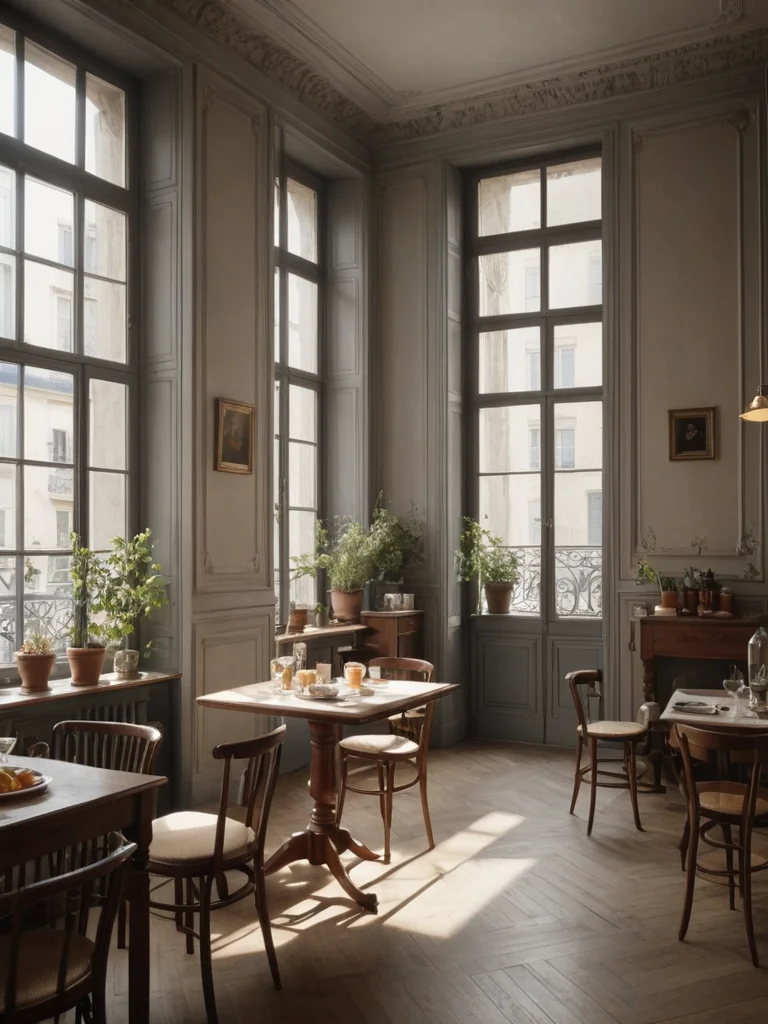
To imagine the daily life of Parisians in the 1920s, it’s necessary to understand where they lived, what they ate, and how much it cost. Paris at that time was a city of contrasts, where luxury coexisted with poverty, and ancient mansions with cramped apartments in multi-story buildings. The lives of the “Lost Generation” also varied: some lived in fashionable districts, others in bohemian quarters, and still others in modest rooms on the outskirts of the city.
Most Parisians lived in apartment buildings, often constructed in the 19th century. Apartments were typically small, with high ceilings and large windows. In the city center, one could find apartments with balconies and views of landmarks, but they were expensive. On the outskirts of the city, housing was more affordable but less comfortable. Many artists and writers preferred to live in the Latin Quarter or Montmartre, where the atmosphere of creativity and freedom prevailed.
Housing prices in Paris in the 1920s, of course, differed significantly from today’s. However, if we convert the prices of that time into modern equivalents, considering inflation and changes in purchasing power, we can get an interesting picture. For example, renting a small apartment in the city center could cost around 500 francs per month, which is equivalent to approximately 1500-2000 euros today. A room on the outskirts of the city was cheaper – about 200 francs, or 600-800 euros in today’s money. Of course, these figures are approximate, but they give an idea of how much Parisians spent on housing.
As for food, Parisian cuisine in the 1920s was as diverse and exquisite as it is today. The city had numerous restaurants, cafes, and bistros offering dishes for every taste and budget. Groceries could be bought at markets and in small shops. The main food staples were bread, cheese, meat, vegetables, and fruits. Parisians loved to drink wine and coffee, which were an integral part of their daily lives.
The average Parisian spent about 300 francs a month on food, which is equivalent to approximately 900-1200 euros today. Of course, this depended on where a person ate and what they bought. Prices were higher in restaurants than at markets, but many Parisians preferred to dine out to enjoy the city’s atmosphere and socialize with friends. The “Lost Generation” often gathered in cafes to discuss their creative plans and exchange ideas. Cafes like “Café de Flore” and “Les Deux Magots” became legendary meeting places for artists and writers.
The daily life of Parisians in the 1920s was far from modern comfort. Most apartments lacked central heating, making them cold in winter. Hot water was a luxury, and many Parisians used public baths. Electricity was not available in all homes, and many people used kerosene lamps. Despite these difficulties, Parisians knew how to enjoy life and found joy in simple things. They loved to stroll through the city, visit museums and theaters, socialize with friends, and spend time in cafes.
Entertainment and Culture of the “Lost Generation”: How They Spent Their Free Time, What They Read, Whom They Listened To (Music, Literature, Cinema)
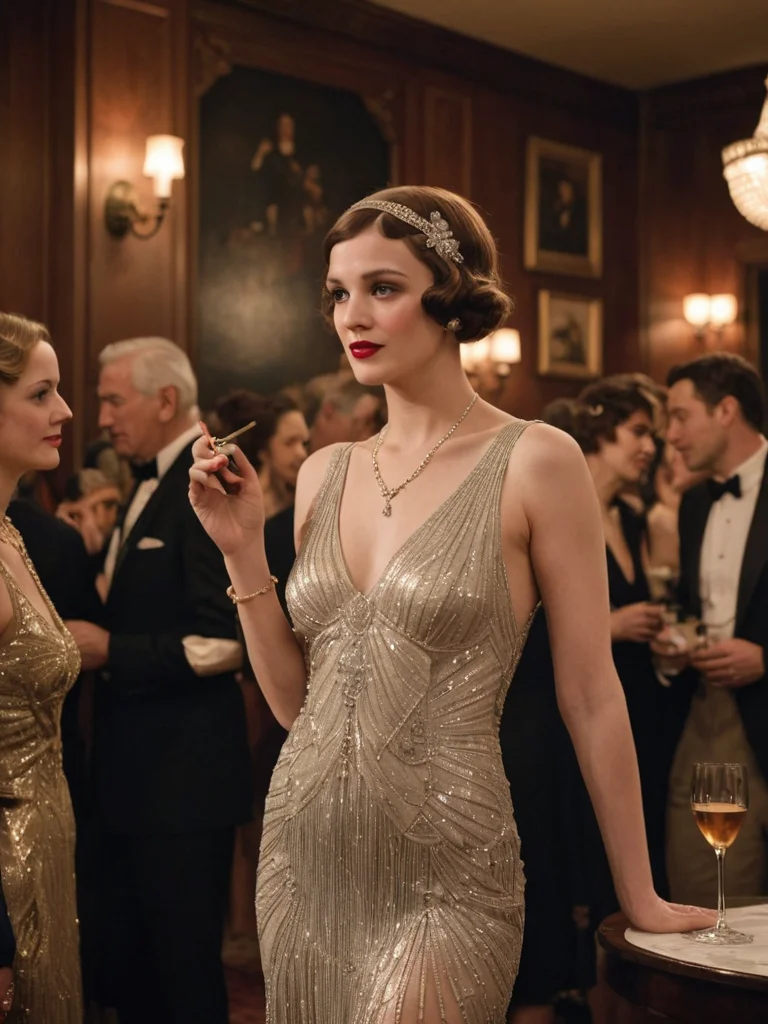
The cultural life of Paris in the 1920s was incredibly rich and diverse. The “Lost Generation” craved new experiences and sought to fill the void left by the war. They attended theaters, cinemas, concert halls, museums, and exhibitions. They read books, listened to music, danced, and socialized with other creative individuals. Paris became a center of attraction for intellectuals and artists from around the world, who brought their ideas and traditions to the city.
Theater was one of the most popular forms of entertainment in Paris. The city had numerous theaters offering performances for every taste – from classical plays to avant-garde productions. Plays by Jean Cocteau and Luigi Pirandello, which reflected the spirit of the times and explored complex issues of human psychology, were particularly popular. Many writers of the “Lost Generation” also wrote plays and staged them in small theaters in Montmartre and the Latin Quarter.
Cinema also became an important part of Parisian cultural life in the 1920s. New cinemas opened in the city, offering films of various genres – from comedies and melodramas to historical dramas and avant-garde experiments. French cinema was experiencing a period of flourishing, and many directors, such as René Clair and Jean Renoir, became world-famous. The “Lost Generation” often visited cinemas to escape everyday problems and immerse themselves in a world of dreams and fantasies.
Music played a special role in the lives of the “Lost Generation.” Paris was filled with music of various genres – from classical and opera to jazz and cabaret. Jazz, brought by African American musicians, became a symbol of freedom and improvisation. Jazz clubs opened in the city, featuring legends like Louis Armstrong, Duke Ellington, and Sidney Bechet. The “Lost Generation” loved to dance to jazz rhythms and enjoy the atmosphere of freedom and ease.
Literature was an integral part of the “Lost Generation’s” life. They read books of various genres – from classic literature to contemporary novels and poetry. Works by Ernest Hemingway, F. Scott Fitzgerald, Gertrude Stein, James Joyce, and Ezra Pound were particularly popular. These writers reflected the spirit of the times in their works and explored complex issues of human psychology. The “Lost Generation” also enjoyed visiting bookstores and libraries, where they could find new books and interact with other literature enthusiasts.
The cultural life of Paris in the 1920s was closely linked to the life of its cafes. Cafes were meeting places for artists, writers, musicians, and intellectuals. Here, they discussed their creative plans, exchanged ideas, and simply spent time in pleasant company. Cafes like “Café de Flore,” “Les Deux Magots,” and “La Coupole” became legendary meeting spots for the “Lost Generation.” In these cafes, one could encounter famous writers, artists, and musicians who created an atmosphere of creativity and freedom.
An example of this is the fact that Hemingway wrote part of his novel “The Sun Also Rises” at “La Coupole.” Sartre and de Beauvoir regularly gathered at “Café de Flore” to discuss their philosophical ideas. And at “Les Deux Magots,” one could find James Joyce working on his “Ulysses.” These cafes were not just places to have coffee but true centers of Parisian cultural life.
Fashion and Style of Parisians in the 1920s: How Men and Women Dressed, Key Wardrobe Elements, Influence on Modern Fashion
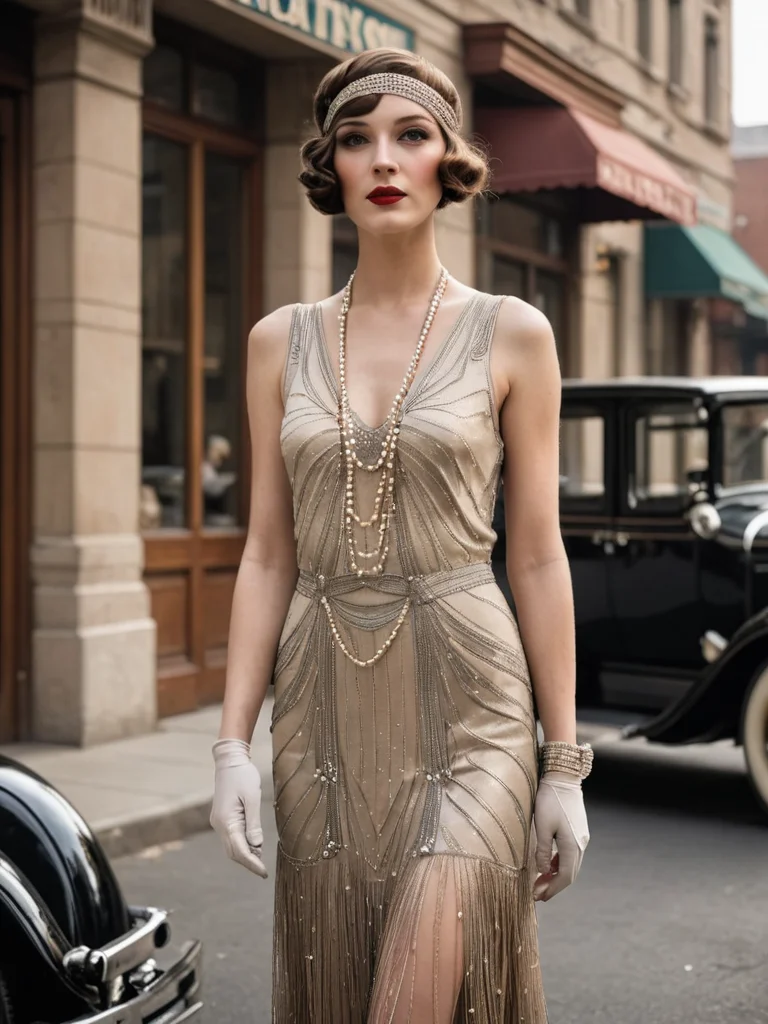
The fashion and style of Parisians in the 1920s reflected the spirit of freedom and change that permeated society. After the war, women became more independent and confident, which was reflected in their clothing. Corsets became a thing of the past, giving way to looser and more comfortable attire. Women began wearing short hairstyles, dropped-waist dresses, and knee-length skirts. Men’s fashion also underwent changes, becoming more elegant and refined. Men started wearing three-piece suits, hats, and canes. Paris became a trendsetter, and Parisian style had a huge influence on fashion worldwide.
Women’s fashion in the 1920s was revolutionary. Women abandoned corsets and long skirts that restricted their movement. They began wearing dropped-waist dresses that emphasized their slimness and grace. Skirts became shorter, reaching the knees, allowing women to dance and move freely. Shirt dresses, robe dresses, and dresses with fringe were popular. Colors were bright and saturated – red, blue, green, yellow. Women loved to adorn their dresses with embroidery, beads, and sequins.
Particular attention was paid to accessories. Women wore long strings of pearls, bracelets, earrings, and rings. Their heads were adorned with cloche hats, which fit snugly and added an air of mystery to their look. Shoes were heeled, often with straps. Makeup was bright and expressive – red lipstick, black eyeliner, and blush on the cheeks. Short haircuts became a symbol of the new era, a symbol of freedom and independence.
Men’s fashion in the 1920s was more conservative but also underwent changes. Men began wearing three-piece suits, consisting of a jacket, waistcoat, and trousers. Colors were dark and subdued – black, gray, brown. Jackets were fitted, with wide lapels. Trousers were wide, with cuffs. Men wore shirts with stand-up collars and ties or bow ties. Their heads were adorned with hats – fedoras, bowlers, or boater hats. Shoes had leather soles, often with perforations. Men carried canes, which lent them elegance and gravitas.
The influence of 1920s Parisian fashion on modern fashion is immense. Many wardrobe elements that were popular at the time are still relevant today. Dropped-waist dresses, knee-length skirts, short haircuts, cloche hats, long strings of pearls – all of these can be seen in contemporary designer collections. Parisian style is still considered the benchmark of elegance and sophistication. Many celebrities, such as Audrey Hepburn, Coco Chanel, and Grace Kelly, were inspired by 1920s fashion and created their own unique looks.
An example of the influence of 1920s fashion on modernity can be seen in the resurgence of “flapper” style dresses. These dresses, characterized by their loose fit, dropped waist, and abundant fringe, have become popular again in recent years. We can also note the influence of the Jazz Age on modern music and dance, which, in turn, is reflected in fashion. “Great Gatsby” themed parties have become very popular, and many people gladly wear outfits inspired by 1920s fashion to them.
The Influence of the “Lost Generation” on Modern Culture: What We Inherited from Paris in the 1920s (Literature, Art, Philosophy)
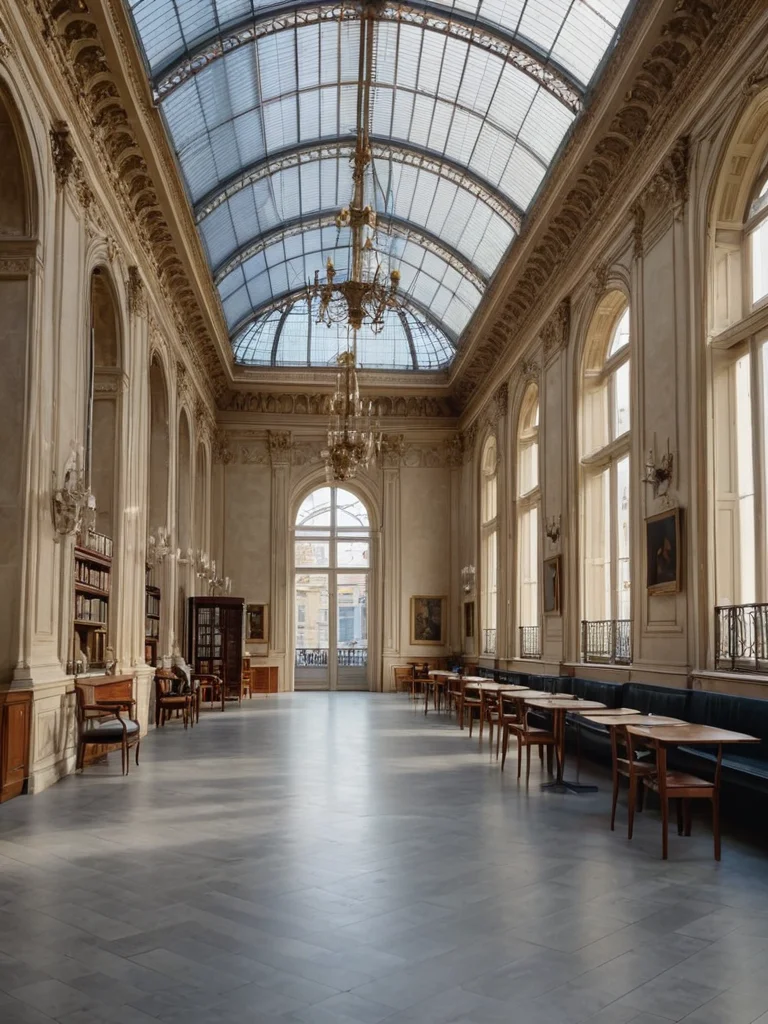
The influence of the “Lost Generation” on modern culture is difficult to overestimate. Literature, art, philosophy, music – in all these areas, we feel the echoes of Paris in the 1920s. The “Lost Generation” did not just reflect the spirit of their time; they shaped new directions in art and literature that continue to influence our perception of the world. Their works continue to inspire us, prompt us to reflect on eternal questions, and seek new answers.
In literature, the “Lost Generation” created a new narrative style characterized by psychological depth, realism, and attention to detail. Writers like Ernest Hemingway, F. Scott Fitzgerald, and Gertrude Stein abandoned traditional literary forms and experimented with new modes of expression. Their works reflected the spirit of the times, disillusionment with old ideals, and a yearning for new values. They wrote about love, war, death, betrayal, friendship – about the eternal themes that concern people throughout all times.
In art, the “Lost Generation” also brought about a revolution. Artists such as Salvador Dalí, René Magritte, and Joan Miró created new art movements like Surrealism and Dadaism. These movements were characterized by absurdity, irrationality, and a desire to express subconscious experiences. The artists of the “Lost Generation” abandoned realistic depictions of the world and created fantastical imagery that made viewers ponder the meaning of life and the nature of reality.
In philosophy, the “Lost Generation” also left its mark. Philosophers like Jean-Paul Sartre and Albert Camus developed new philosophical concepts such as existentialism and absurdism. These concepts reflected the spirit of the times, disillusionment with old ideas, and a yearning for new values. The philosophers of the “Lost Generation” argued that life is devoid of inherent meaning and that individuals must create their own meaning in life. They called for freedom, responsibility, and authenticity.
The music of the “Lost Generation” also had a profound impact on modern culture. Jazz, which originated in African American communities in the United States, became a symbol of freedom and improvisation. Musicians like Louis Armstrong, Duke Ellington, and Sidney Bechet brought jazz to Paris, where it became incredibly popular. Jazz influenced many other music genres, such as blues, rock and roll, and pop music.
Thus, the “Lost Generation” left an indelible mark on cultural history. Their works continue to inspire us, prompt us to reflect on eternal questions, and seek new answers. We inherited freedom, creativity, innovation, and a pursuit of new values from them. Paris in the 1920s was the cradle of the “Lost Generation,” and its influence on modern culture cannot be overstated.
For instance, we can recall how the ideas of existentialism, born in Parisian cafes, continue to influence modern psychology and philosophy. The literature of Hemingway and Fitzgerald is still studied in universities worldwide, and surrealist art inspires contemporary artists and designers. Even the fashion for jazz has not faded and continues to attract fans globally. All of this testifies to the fact that the legacy of the “Lost Generation” is alive and continues to influence our culture.
